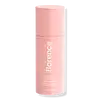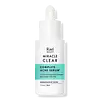What's inside
What's inside
 Key Ingredients
Key Ingredients

 Benefits
Benefits

 Concerns
Concerns

 Ingredients Side-by-side
Ingredients Side-by-side

Water
Skin ConditioningArginine
MaskingPropanediol
SolventC13-15 Alkane
SolventIsopentyldiol
HumectantHydroxyethyl Acrylate/Sodium Acryloyldimethyl Taurate Copolymer
Emulsion StabilisingSclerotium Gum
Emulsion StabilisingC13-14 Alkane
SolventPentylene Glycol
Skin ConditioningCitric Acid
BufferingXylitylglucoside
HumectantSodium Benzoate
MaskingAnhydroxylitol
HumectantC15-23 Alkane
SolventDecyl Glucoside
CleansingGlycerin
HumectantPotassium Sorbate
PreservativeFucus Spiralis Extract
EmollientXylitol
HumectantTetraselmis Chui Extract
EmollientSodium Phytate
Piperonyl Glucoside
Skin ProtectingSodium Acetylated Hyaluronate
HumectantSodium Hyaluronate
HumectantSodium Hyaluronate Crosspolymer
HumectantPotassium Hydroxide
BufferingHydrolyzed Sodium Hyaluronate
Skin ConditioningEthylhexylglycerin
Skin ConditioningWater, Arginine, Propanediol, C13-15 Alkane, Isopentyldiol, Hydroxyethyl Acrylate/Sodium Acryloyldimethyl Taurate Copolymer, Sclerotium Gum, C13-14 Alkane, Pentylene Glycol, Citric Acid, Xylitylglucoside, Sodium Benzoate, Anhydroxylitol, C15-23 Alkane, Decyl Glucoside, Glycerin, Potassium Sorbate, Fucus Spiralis Extract, Xylitol, Tetraselmis Chui Extract, Sodium Phytate, Piperonyl Glucoside, Sodium Acetylated Hyaluronate, Sodium Hyaluronate, Sodium Hyaluronate Crosspolymer, Potassium Hydroxide, Hydrolyzed Sodium Hyaluronate, Ethylhexylglycerin
Salicylic Acid 1.5%
MaskingWater
Skin ConditioningPropanediol
SolventGlycerin
HumectantSimmondsia Chinensis Seed Oil
EmollientNiacinamide
SmoothingSodium Citrate
BufferingC13-15 Alkane
SolventPanthenol
Skin ConditioningGluconolactone
Skin ConditioningSilica
AbrasiveZinc PCA
HumectantLysolecithin
EmulsifyingSclerotium Gum
Emulsion StabilisingSodium Benzoate
MaskingAloe Barbadensis Leaf Juice
Skin ConditioningSodium Hyaluronate
HumectantSodium Phytate
Pullulan
Xanthan Gum
EmulsifyingBisabolol
MaskingSuccinic Acid
BufferingPotassium Hydroxide
BufferingCalcium Gluconate
HumectantCentella Asiatica Extract
CleansingSalicylic Acid 1.5%, Water, Propanediol, Glycerin, Simmondsia Chinensis Seed Oil, Niacinamide, Sodium Citrate, C13-15 Alkane, Panthenol, Gluconolactone, Silica, Zinc PCA, Lysolecithin, Sclerotium Gum, Sodium Benzoate, Aloe Barbadensis Leaf Juice, Sodium Hyaluronate, Sodium Phytate, Pullulan, Xanthan Gum, Bisabolol, Succinic Acid, Potassium Hydroxide, Calcium Gluconate, Centella Asiatica Extract
Ingredients Explained
These ingredients are found in both products.
Ingredients higher up in an ingredient list are typically present in a larger amount.
C13-15 Alkane is a group of alkanes with 13 to 15 carbon atoms in the alkyl chain.
It is a solvent and texture enhancer. Solvents are used to keep ingredients together in a product. They can help dissolve ingredients to stable bases or help evenly distribute ingredients throughout the product.
Glycerin is already naturally found in your skin. It helps moisturize and protect your skin.
A study from 2016 found glycerin to be more effective as a humectant than AHAs and hyaluronic acid.
As a humectant, it helps the skin stay hydrated by pulling moisture to your skin. The low molecular weight of glycerin allows it to pull moisture into the deeper layers of your skin.
Hydrated skin improves your skin barrier; Your skin barrier helps protect against irritants and bacteria.
Glycerin has also been found to have antimicrobial and antiviral properties. Due to these properties, glycerin is often used in wound and burn treatments.
In cosmetics, glycerin is usually derived from plants such as soybean or palm. However, it can also be sourced from animals, such as tallow or animal fat.
This ingredient is organic, colorless, odorless, and non-toxic.
Glycerin is the name for this ingredient in American English. British English uses Glycerol/Glycerine.
Learn more about GlycerinPotassium hydroxide is commonly known as caustic potash. It is used to fix the pH of a product or as a cleaning agent in soap. In cleansers, it is used for the saponification of oils.
Sapnification is the process of creating fatty acid metal salts from triglycerides and a strong base. During this process, Potassium Hydroxide is used up and is not present in the final product.
Using high concentrations of Potassium Hydroxide have shown to irritate the skin.
Learn more about Potassium HydroxidePropanediol is an all-star ingredient. It softens, hydrates, and smooths the skin.
It’s often used to:
Propanediol is not likely to cause sensitivity and considered safe to use. It is derived from corn or petroleum with a clear color and no scent.
Learn more about PropanediolSclerotium Gum is a polysaccharide gum made by the fungus, Sclerotium rolfssii. It is similar to xanthan gum.
In cosmetics, Sclerotium Gum is used to thicken the texture and to help stabilize other ingredients.
As an emulsifier, Sclerotium Gum helps prevent ingredients from separating, such as water and oil.
Learn more about Sclerotium GumSodium Benzoate is a preservative. It's used in both cosmetic and food products to inhibit the growth of mold and bacteria. It is typically produced synthetically.
Both the US FDA and EU Health Committee have approved the use of sodium benzoate. In the US, levels of 0.1% (of the total product) are allowed.
Sodium benzoate works as a preservative by inhibiting the growth of bacteria inside of cells. It prevents the cell from fermenting a type of sugar using an enzyme called phosphofructokinase.
It is the salt of benzoic acid. Foods containing sodium benzoate include soda, salad dressings, condiments, fruit juices, wines, and snack foods.
Studies for using ascorbic acid and sodium benzoate in cosmetics are lacking, especially in skincare routines with multiple steps.
We always recommend speaking with a professional, such as a dermatologist, if you have any concerns.
Learn more about Sodium BenzoateSodium Hyaluronate is hyaluronic acid's salt form. It is commonly derived from the sodium salt of hyaluronic acid.
Like hyaluronic acid, it is great at holding water and acts as a humectant. This makes it a great skin hydrating ingredient.
Sodium Hyaluronate is naturally occurring in our bodies and is mostly found in eye fluid and joints.
These are some other common types of Hyaluronic Acid:
Learn more about Sodium HyaluronateSodium Phytate is the synthetic salt form of phytic acid. Phytic acid is an antioxidant and can be found in plant seeds.
Sodium Phytate is a chelating agent. Chelating agents help prevent metals from binding to water. This helps stabilize the ingredients and the product.
Water. It's the most common cosmetic ingredient of all. You'll usually see it at the top of ingredient lists, meaning that it makes up the largest part of the product.
So why is it so popular? Water most often acts as a solvent - this means that it helps dissolve other ingredients into the formulation.
You'll also recognize water as that liquid we all need to stay alive. If you see this, drink a glass of water. Stay hydrated!
Learn more about Water